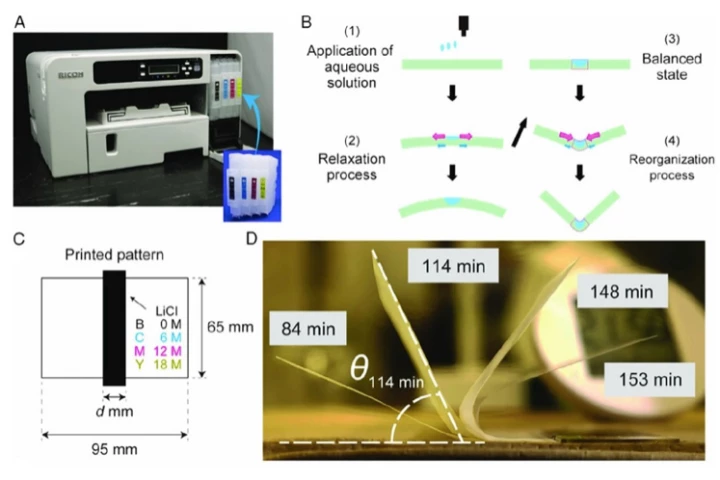Self-Assembly
-
Using DNA and proteins, scientists have created new synthetic cells that act like living cells. These cells can be reprogrammed to perform multiple functions, opening the door to new synthetic biology tech that goes beyond nature’s abilities.
-
Scientists have developed what they call the most water-repellent surface ever. By giving it a liquid-like coating that defies usual designs, water will roll off the surface at angles 500 times shallower than other superhydrophobic materials.
-
In a fight against Iron Man, you might be better off betting on Glass DNA Nanolattice Man instead. Engineers have developed a very strong and lightweight new material out of DNA that self-assembles into lattices, and is then coated in glass.
-
When plants perform movements such as curling their leaves, they do so by drawing water into the cellulose fibers in that part of their "body." Scientists have now replicated that technique to produce self-folding paper structures.
-
Lenco, RepRap Universe and the Qeske community have created the Lenco-MD in the belief that today's record player should just be a general starting point, and that vinyl lovers should be able to enhance, customize and upgrade that basic template to reflect their personal tastes or needs.
-
Paper engineer Robert Sabuda has teamed up with the Leonardo da Vinci Robot Society to create the Drawmaton drawing machine that's based on a rumor, that da Vinci's so-called Robot Knight coudl not only sit, stand and hug guests at parties, but could also draw.
-
Stringed instruments bowed by a wheel cranked by hand have been around for centuries, and come in many shapes and sizes. Inspired by 16th century instruments, model maker UGears has launched a self assembly hurdy gurdy kit on Kickstarter that should appeal to wooden puzzle fans and musicians alike.
-
MIT researchers have developed a new way to make smaller circuits that would allow more of them to be crammed onto microchips. The new technique could make patterns smaller than 10 nm by combining several processes already used, which means they could be implemented relatively easily and cheaply.
-
Materials that fold themselves are usually triggered by light, which works well for building simple 3D shapes like cubes and pyramids. By varying the color of the light and the "hinges," a new method can make more complex structures by triggering the material to fold in a specific order.
-
Modal Electronics has detailed its upcoming Modal CRAFTsynth monophonic DSP-based synthesizer, which comes as a self-assembly kit. The UK-based boutique maker reckons that sonic wizards should be ready to rock in less than 10 minutes.
-
Using a phenomenon dubbed "Teslaphoresis," researchers have made carbon nanotubes self-assemble to form a circuit linking two LEDs and then used the energy from that same field to power them
-
Lots of people make their own robots, and in all sorts of ways, but have you ever heard of anyone baking one in an oven? Researchers at MIT have injected further heat into the evolving 4D printing space by demonstrating how to create self-assembling bodies that fold together when baked.
Load More











